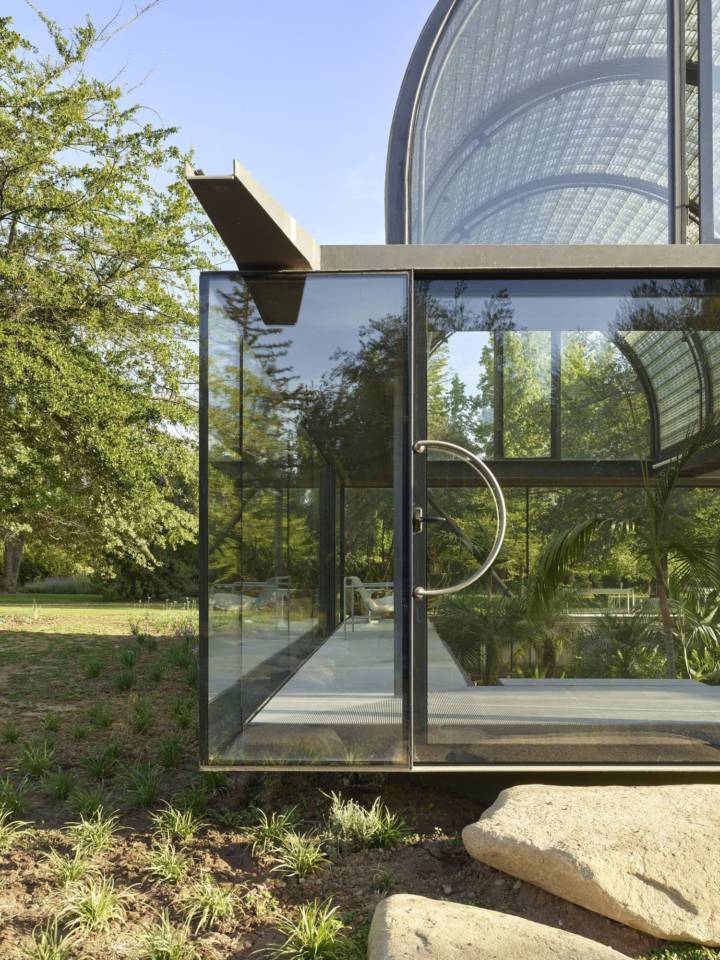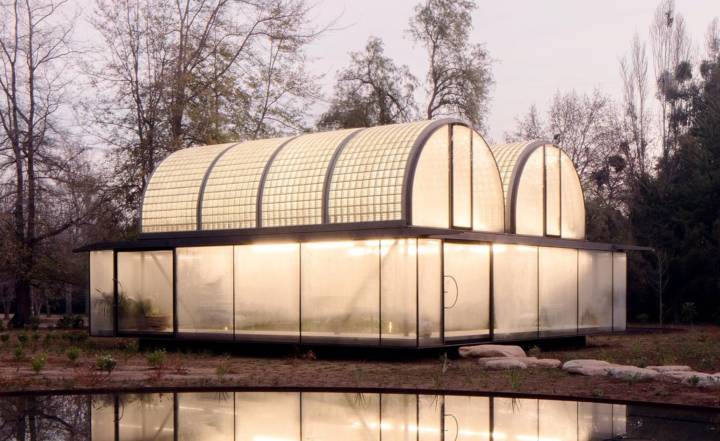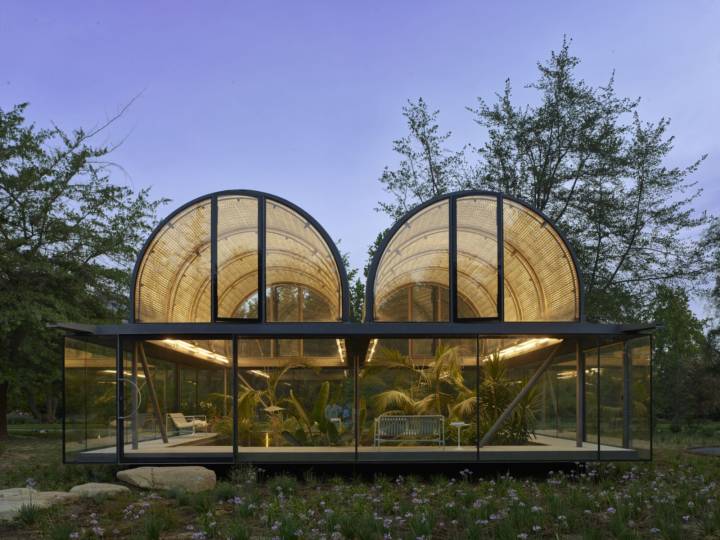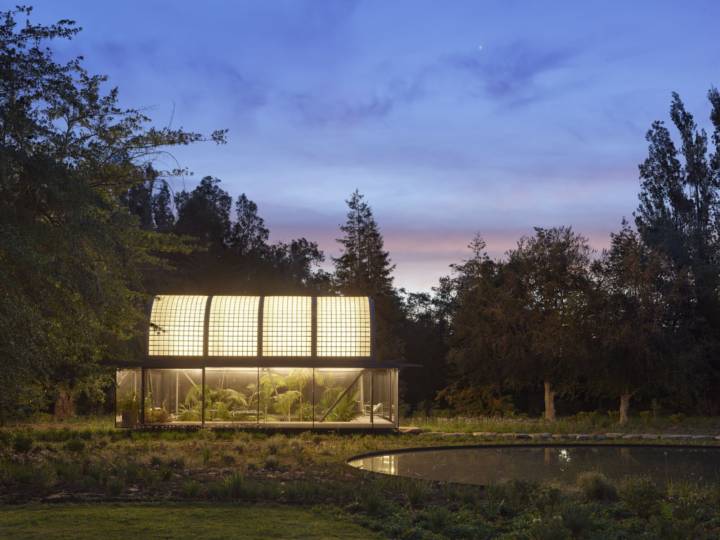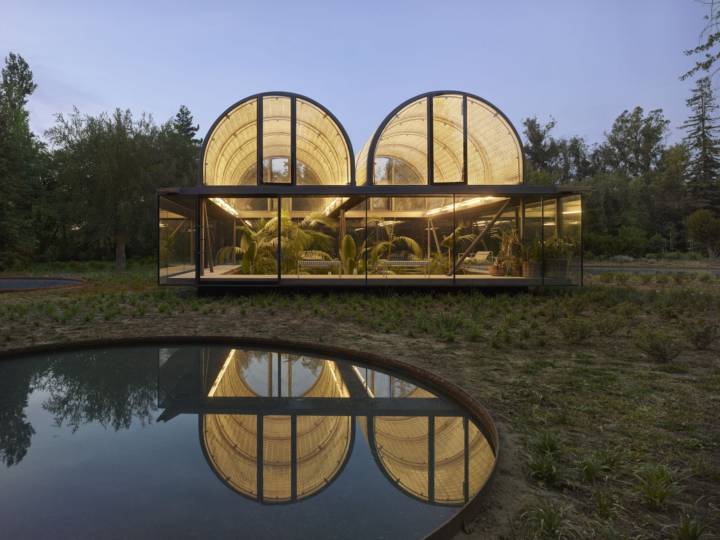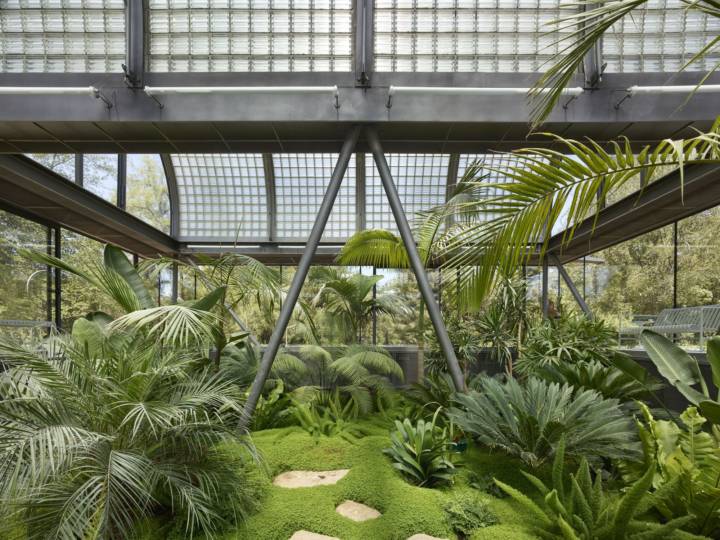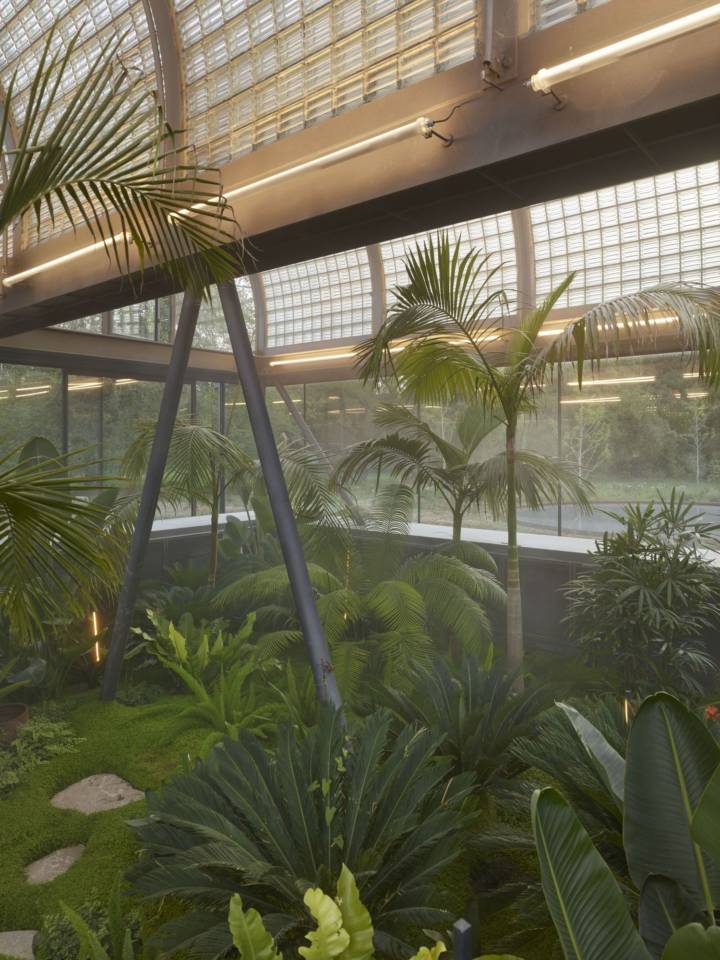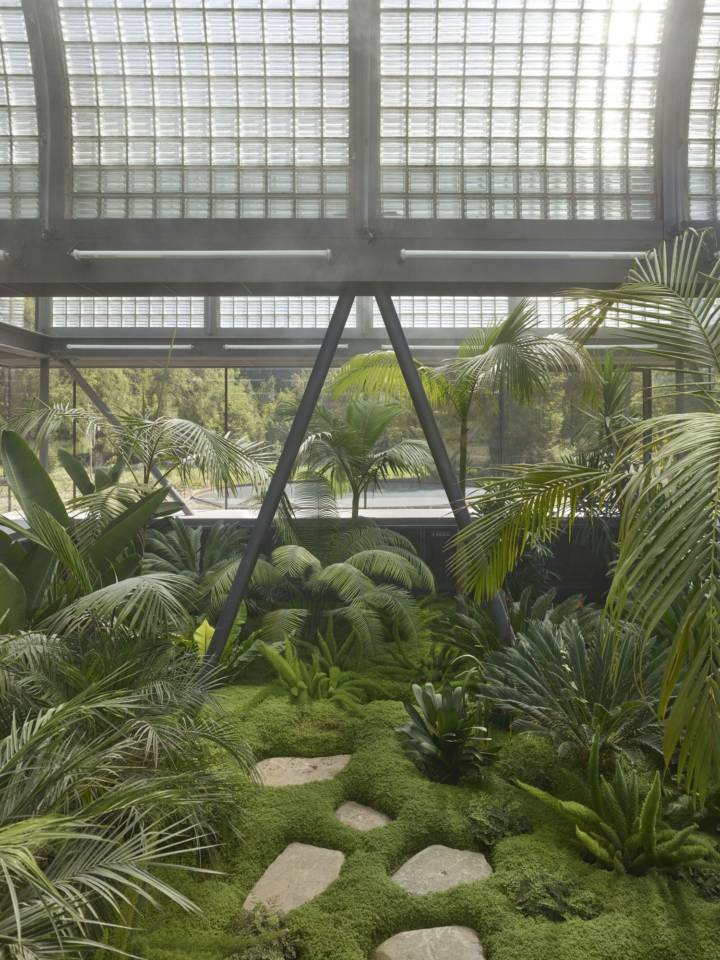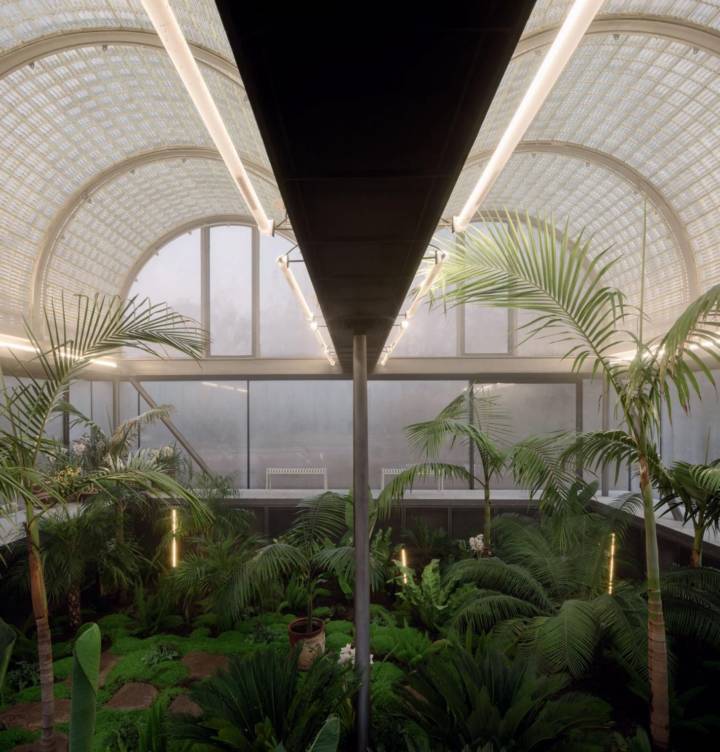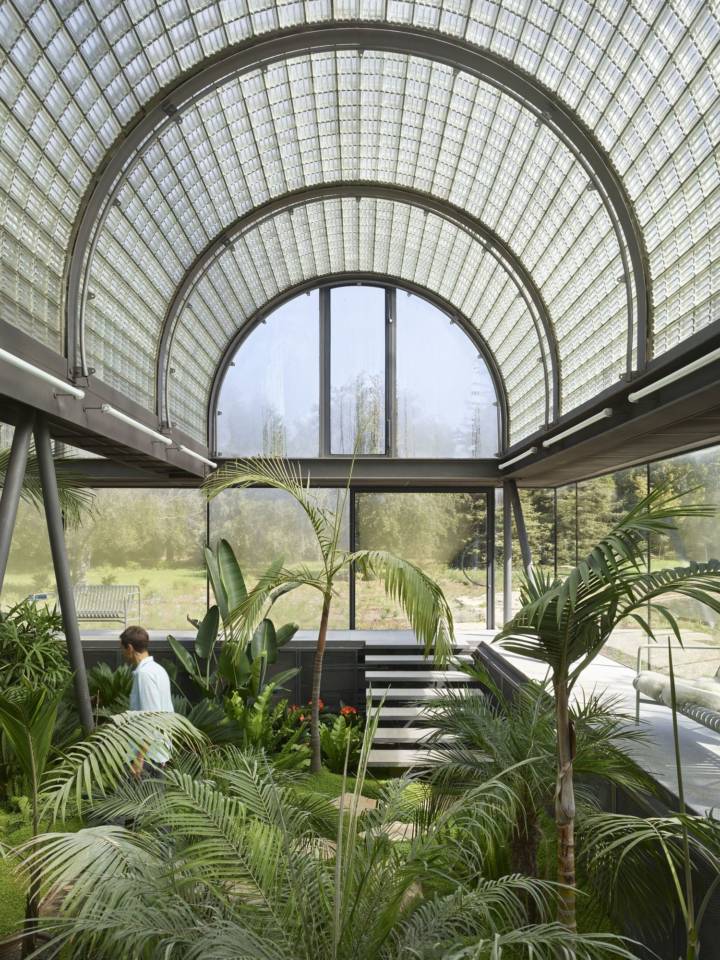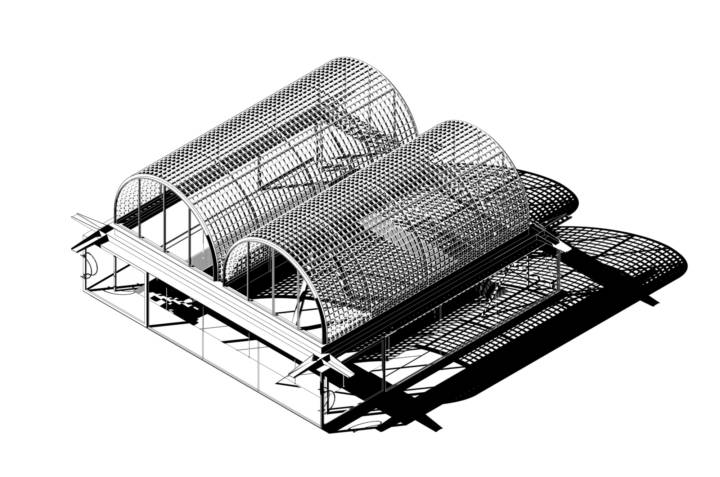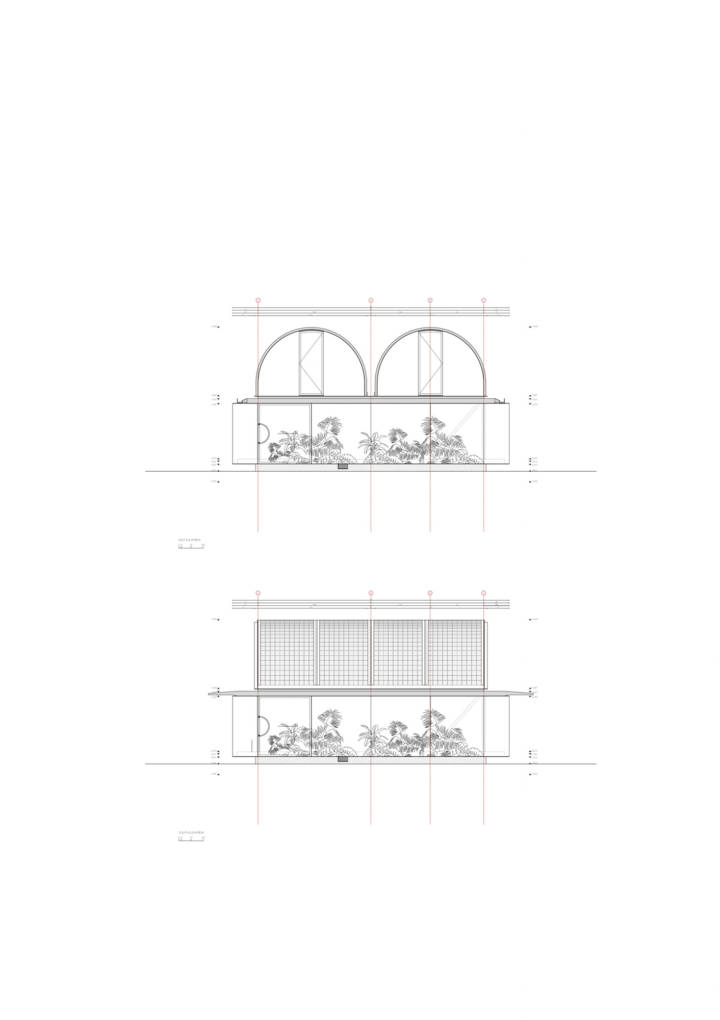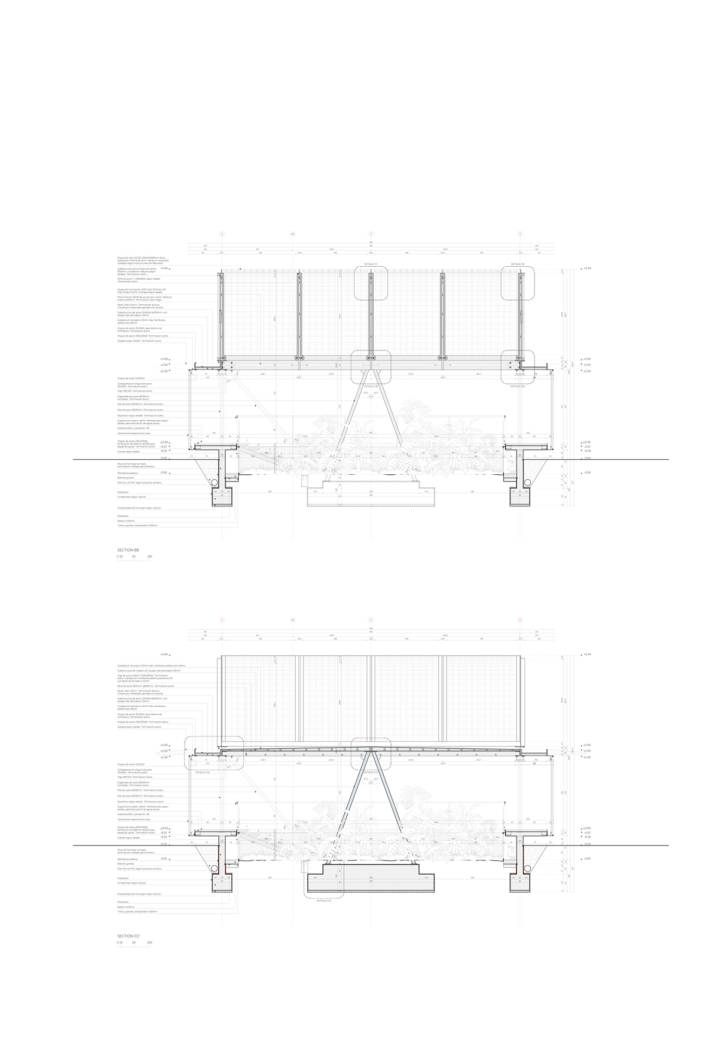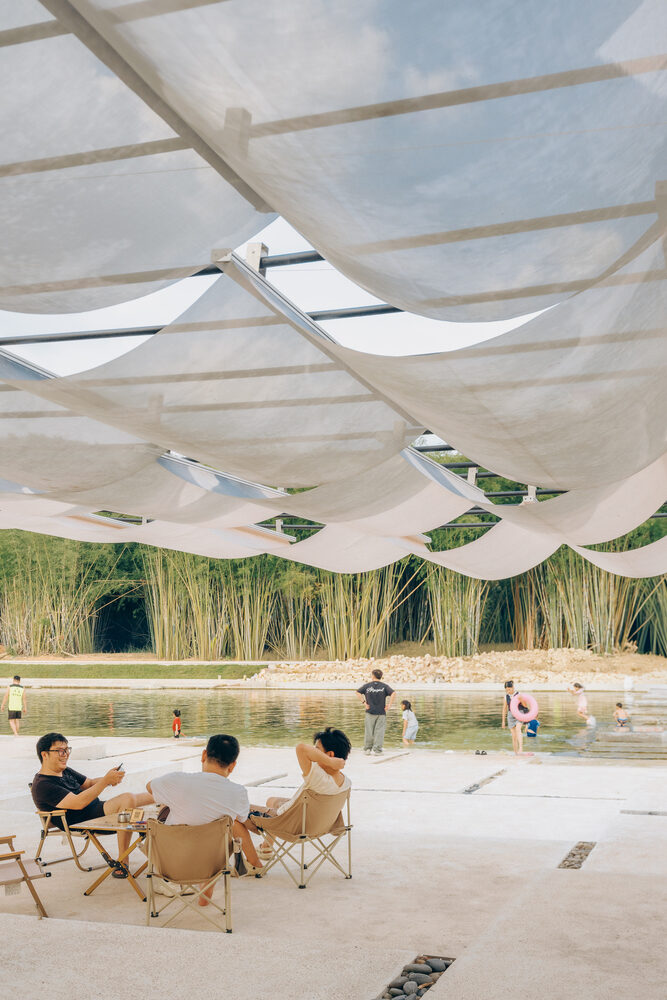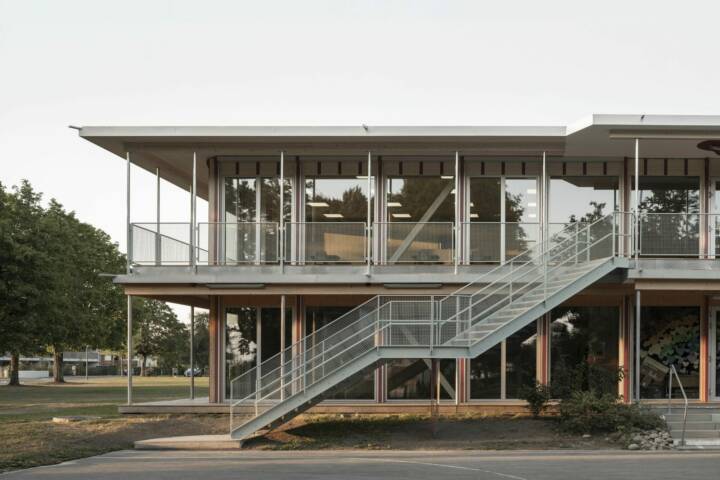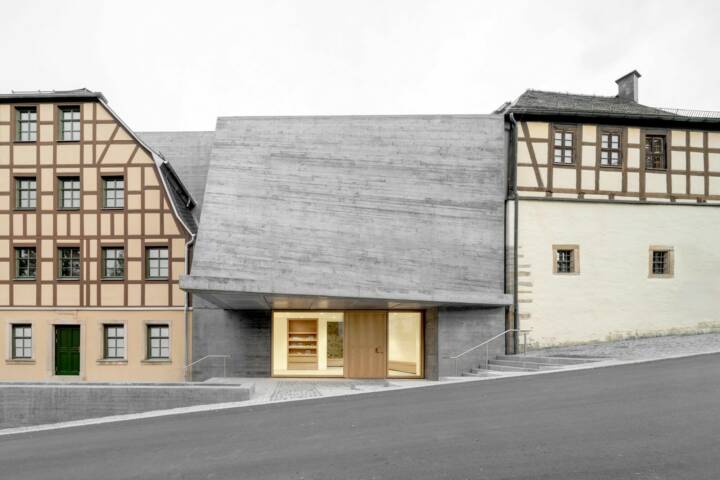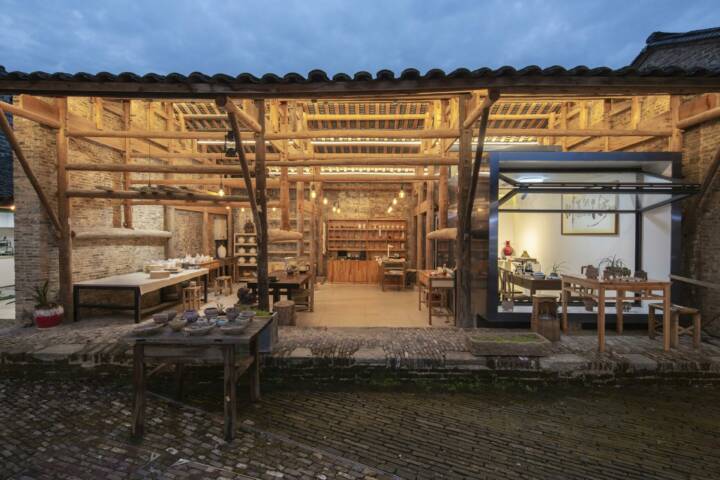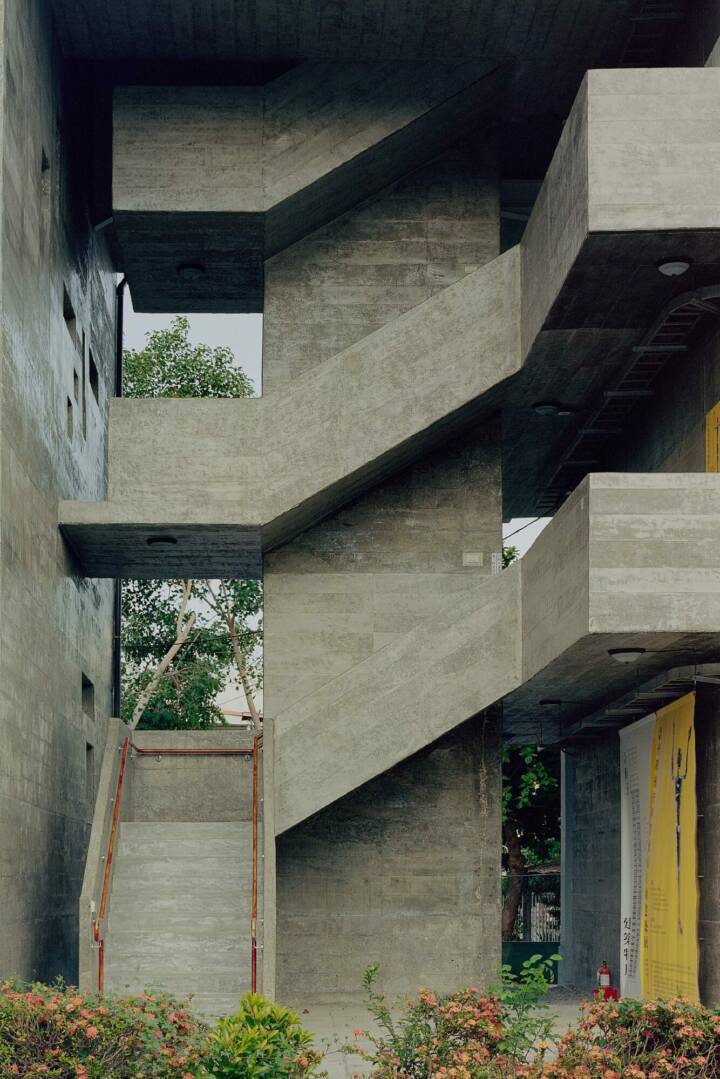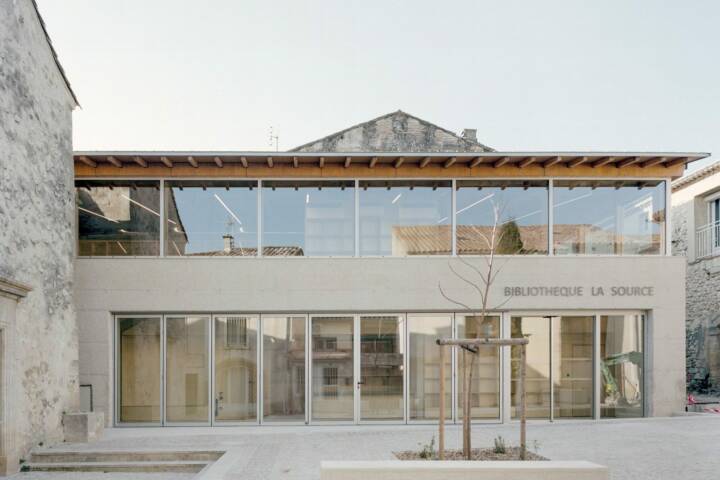Architects: Max Núñez Photography: Roland Halbe Construction Period: 2022 Location: Pirque, Chile
The glasshouse contains a small captive forest. Through various mechanical systems, it generates an artificial environment conditioned to recreate a fragment of tropical forest at a different latitude. Its inhabitants are a variety of plants, ferns, palm trees, orchids, mosses, small trees, and some insects that have found their new habitat in this controlled atmosphere.
Here humans are sporadic visitors. Except for some intrusions from the gardener or the owner, this is mostly a space empty of people; it is a house for plants.
The daily routine of these species is adjusted to their circadian rhythm, to the movement of the sun, and its impact on the temperature and humidity of the environment, as this translates into the need for water and ventilation. These subtle atmospheric variables were integrated into the design, trying to closely link this little piece of nature with the supporting structure and mechanical conditioning systems.
Read MoreCloseThe roof is made up of two glass block vaults. The concave space under the vaults allows an interior height sufficient for the growth of small trees. In turn, the structural glass shell forms a sky with a continuous surface that avoids the projection of shadows. The glass block used has the particularity that its inner face is striated, which prevents the direct passage of the sun’s rays, reducing direct radiation on the leaves. The only interruptions on the surface of the vaults are the structural expansions that allow them to resist a possible seismic movement. These grooves are used to lead a system of small hoses through which micro-sprinklers moisten the environment at a zenith when the humidity drops.
At the ends of each vault, oriented north-south, there are projecting doors that open mechanically to produce cross ventilation when the interior temperature exceeds 24 degrees. The central support of both vaults allows the water from the sprinklers to rise by one column and by the other the electrical wiring that feeds the opening of the ventilation windows. Below, around the plants, a 1m high plinth clad in expanded metal reveals the heating system ducts that run around the perimeter, necessary to heat the room when temperatures drop below 14 degrees. These different mechanisms, added to a standard automated irrigation system, are operated simultaneously throughout the year by a digital controller, a common technology in greenhouses in the agricultural industry. For the four glass fronts that surround the square plan of the building, an extra clear glass was used, making it more translucent to the human eye, in this way the plants are more visible from the outside, turning the building into a large showcase that exhibits their inhabitants.
Text provided by the architect.

